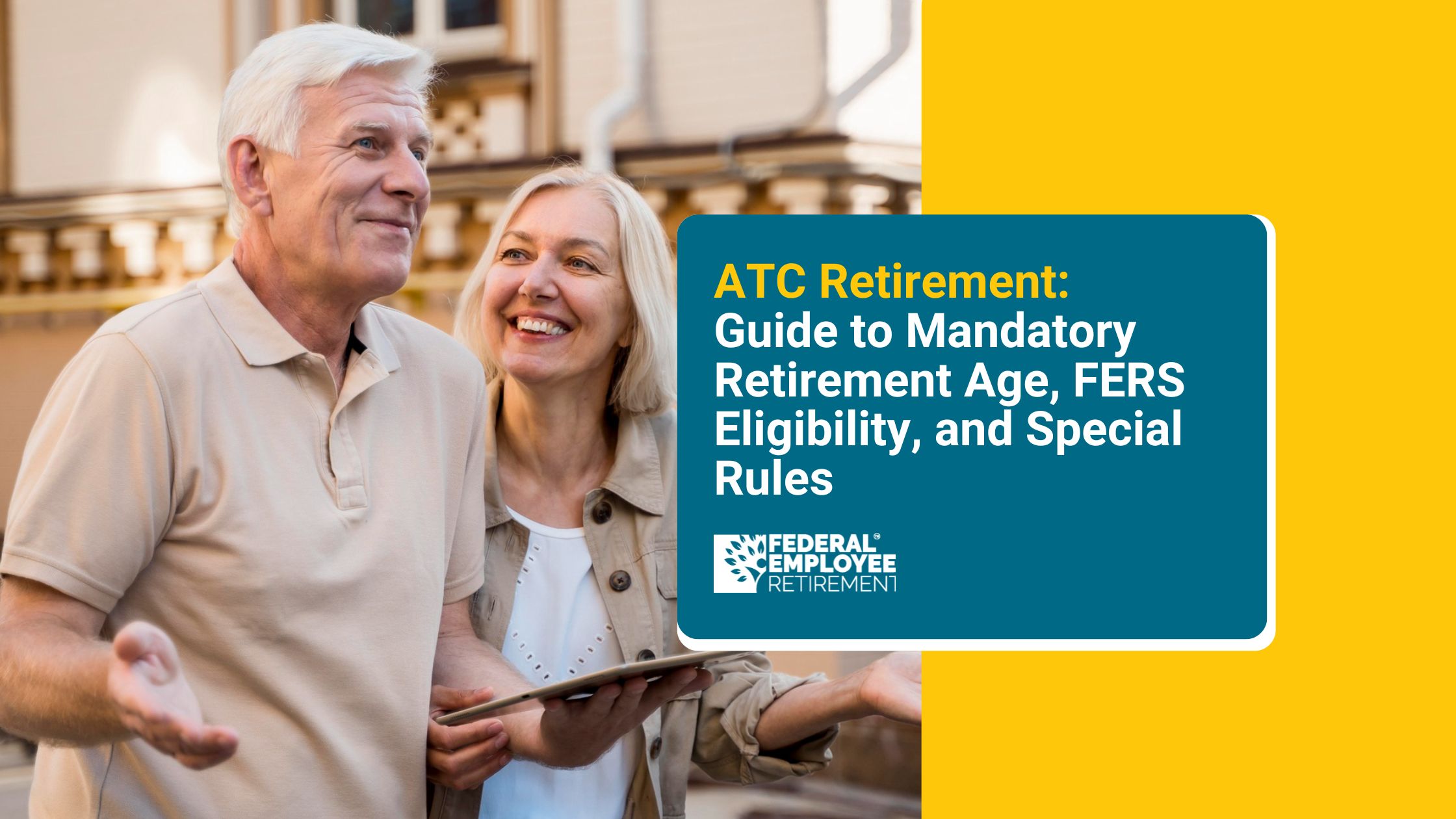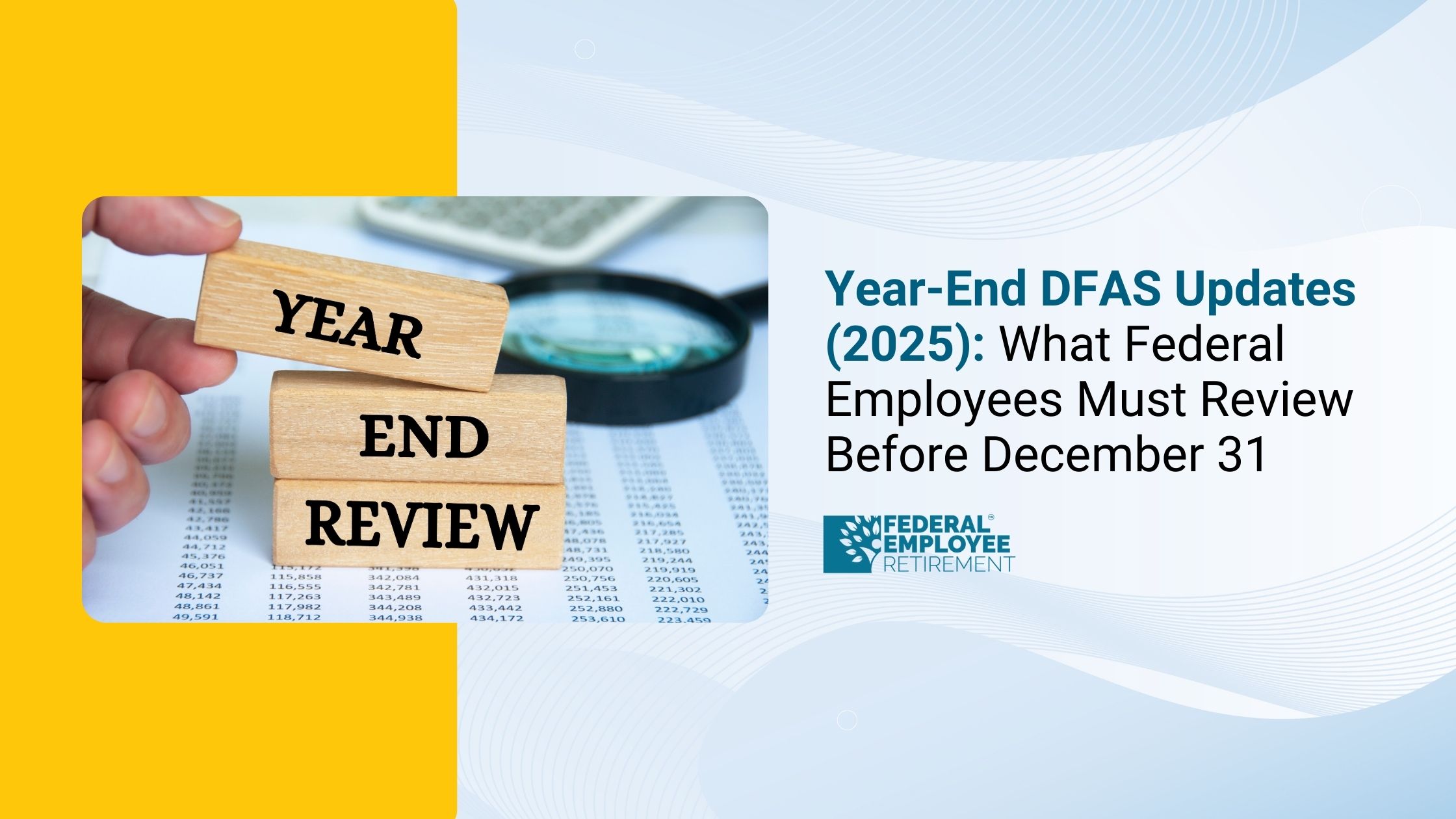You’re not alone; 4,359 federal employees booked their free review.

ATC Retirement: Guide to Mandatory Retirement Age, FERS Eligibility, and Special Rules
Air Traffic Control Specialists (ATCs) play a critical role in keeping aircraft safely separated and ensuring the efficient flow of air traffic in the skies. Due to the intense mental demands and high-stress environment of the job, ATC retirement falls under “special provision” rules within the Federal Employees Retirement System (FERS). This includes a mandatory retirement age of 56 and early retirement eligibility with enhanced benefits.
In this guide, we’ll walk through everything federal ATCs need to know about their retirement path, including eligibility criteria, mandatory retirement rules, historical background, and how FERS applies to them. If you're wondering when and how ATCs retire and why it differs from regular federal retirement you'll find the answers here.
Why ATCs Retire Earlier Than Most Federal Employees
ATCs are part of a select group of federal positions, along with Law Enforcement Officers (LEOs) and Firefighters, that fall under FERS special provisions due to the physical and mental demands of their work. Unlike most FERS-covered employees who can work past age 60, ATCs are required to retire at age 56.
This mandatory retirement is based on the demanding nature of the role, which requires high levels of focus, decision-making, and communication under pressure. These requirements are in place to ensure the safety of thousands of lives in the air daily.
ATC Retirement Eligibility Rules
ATCs qualify for FERS retirement under the following conditions:
- Age 50 with 20 years of service
- Any age with 25 years of service
Because of the earlier retirement age, ATCs receive additional retirement benefits, including:
- A higher pension calculation rate due to special provisions
- Access to the Special Retirement Supplement (SRS), bridging income until Social Security eligibility at age 62
Early TSP withdrawal eligibility without penalty starting at age 50 (instead of 59½)
Mandatory Retirement Age for ATCs
The ATC mandatory retirement age is 56 earlier than the standard 57 for other special provision employees like LEOs and Firefighters.
This rule was designed with safety in mind, as the cognitive and emotional demands of the job make it critical to have only the most capable individuals managing airspace operations.
Notably, ATCs must be hired before age 30, ensuring enough service years before hitting the mandatory retirement limit. This early career entry requirement aligns with the unique retirement structure designed for their role.
A Historical Look at ATC Retirement: The PATCO Strike
In 1981, the Professional Air Traffic Controllers Association (PATCO) led a strike demanding improved working conditions. President Ronald Reagan responded by firing over 11,000 striking ATCs and banning them from federal service for life.
This decision shaped the future of the ATC workforce. While Reagan later declared July 6 as National Air Traffic Controllers Day, it wasn’t until 1993 that President Clinton lifted the hiring ban via executive order.
Some of these previously terminated ATCs were later re-hired and given special exceptions to continue working past age 56 in order to reach 20 years of service. However, such extensions are rarely granted today.
ATC Career Requirements and Certification
To qualify as an ATC, applicants must meet rigorous educational and physical standards:
- Completion of an Air Traffic Collegiate Training Initiative (AT-CTI) Program, or
- A bachelor’s degree in any field with one year of graduate study or relevant work/training
- Must apply before age 30
- U.S. citizenship
- Medical and psychiatric evaluation
- Security clearance
- Air traffic pre-employment exam
- Willingness to relocate
Additionally, ATCs must possess strong reasoning skills, quick reflexes, and excellent verbal communication abilities. With planes moving at over 500 mph, seconds count.
ATC Salaries and Job Types
ATCs are employed by the Federal Aviation Administration (FAA) and earn an average of $120,830 per year. Available roles include:
- Tower Positions – managing traffic on runways and taxiways
- Terminal Positions – handling take-offs and landings
- Center Positions – monitoring en-route aircraft
- Research & Development – designing future traffic systems and technology
FERS Retirement for ATCs: Summary
While ATC retirement is similar to that of other federal employees under FERS, the mandatory retirement age of 56 and early eligibility rules make it unique. ATCs receive enhanced pension calculations, SRS benefits, and TSP withdrawal flexibility all designed to accommodate the intensity and demands of the role.
If you are an ATC or planning to become one, understanding how atc retirement works will help you plan your career and financial future with clarity.
Conclusion
The path to ATC retirement reflects the exceptional responsibility of the role. With earlier retirement eligibility, enhanced benefits, and mandatory retirement at 56, it’s essential that Air Traffic Control Specialists plan ahead. Whether you're early in your career or approaching retirement age, understanding the structure and rules of FERS will ensure you're on track for a stable post-career life.
Air Traffic Controller (ATC) Retirement & Pension FAQs
What is the retirement age for ATC?
Federal air traffic controllers under FERS (Federal Employees Retirement System) are subject to mandatory retirement at age 56, with a few exceptions.
They are eligible to retire as early as age 50 with 20 years of service, or at any age with 25 years of service in covered ATC positions.
Why do air traffic controllers have to retire at 56?
Due to the high-stress and safety-critical nature of the job, the FAA mandates early retirement to ensure peak mental and physical performance.
The mandatory retirement age of 56 helps maintain aviation safety while allowing controllers to access enhanced retirement benefits through special provisions.
How much is an ATC pension?
ATC pensions are calculated using enhanced FERS formulas for “special category” employees. Typically:
- Pension = 1.7% × High-3 salary × first 20 years
- Plus 1.0% × High-3 salary × remaining years (if any)
Example:
If an ATC retires at 50 with 25 years of service and a High-3 average of $120,000:
- First 20 years: 1.7% × 20 × $120,000 = $40,800
- Next 5 years: 1.0% × 5 × $120,000 = $6,000
- Total Annual Pension = $46,800 (before deductions)
They may also receive the FERS Annuity Supplement until age 62.
Do air traffic controllers get a good pension?
Yes, federal ATCs receive one of the best retirement packages among federal employees:
- Higher pension multipliers (1.7%)
- FERS Annuity Supplement (similar to Social Security bridge)
- Early retirement eligibility
- Thrift Savings Plan (TSP) with agency matching
- Lifetime health benefits if enrolled in FEHB
This combination provides strong retirement security, especially when planned well.


Get Updated
Subscribe to our weekly updates for the latest on retirement planning, federal benefits, exclusive webinars, and more!
Download Federal Retirement: Step-by-step Checklist
This comprehensive guide will help you understand your federal benefits, optimize your savings, and plan for a comfortable future.



.png)








